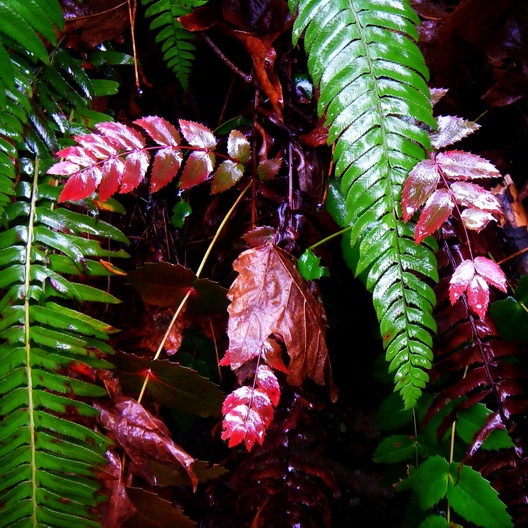We have had over six inches of rain since early September. Once we’ve gotten another six inches or so, the ground will be saturated enough to effectively remove the highest priority invasive plants — Ivy, Holly, Laurel, Himalayan Blackberry, and Scotch Broom. Typically, we will continue to get lots of rain through November and into March. Though we will probably have short spells of snow and freezing temperatures, most of this time period will be ideal for backyard forest restoration.
- The ground will become saturated with moisture and will be much easier to get the roots out when pulling invasive plants. (If the root doesn’t come out, the plant will grow back.)
- The shrubs will have shed their leaves, making it easier to move around off-trail and easier to spot the evergreen invasives.
- The daytime temperatures will have fallen into the forties and low fifties — optimum for outdoor labor.
Yes, I’m going to get wet over the next four months working in the woods, but it’s only water, and the exercise will keep me warm. I do like to start out dry each day, so I have two complete sets of clothes, including gloves and shoes, that I hang in an out-of-the-way place, so they get at least a little dry between uses.
It feels so good to get out in the woods this time of year. I can work under the canopy of the forest in light rain or drizzle and not even realize it’s coming down. After a day or two with significant rainfall, the understory remains wet even when the rain has stopped, but if I choose to work despite the sogginess, I know that I have a warm house, dry clothes, and a nice hot tea at home. Welcome to the wet season!
